For Its 50th Anniversary Exhibition, Bernard Jacobson Gallery Celebrates the Stylized and Surreal English Gardens of Ivor Abrahams
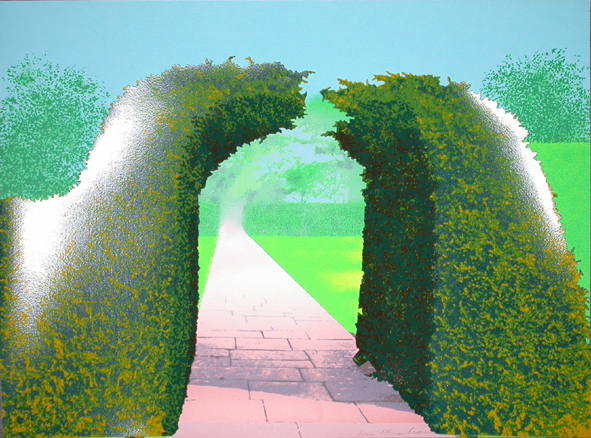

Katie White

British artist Ivor Abrahams once called the garden an “endless chess-game,” and for over a decade, from the late 1960s to the early 80s, it was this world of curved paths and towering hedges that gave inspiration to the artist’s numerous screenprints, sculptures, and collages.
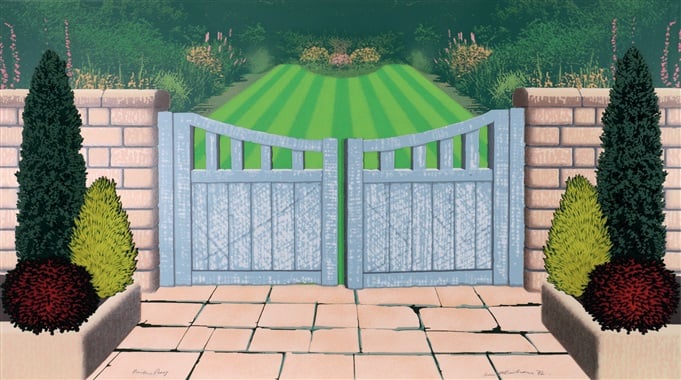
Ivor Abrahams, Open Gate (From 14 Big Prints) (1972). Courtesy Bernard Jacobson Gallery.
“Ivor Abrahams | the garden and other themes,” a new exhibition at London’s Bernard Jacobson Gallery, offers a fascinating window into an oeuvre that defies easy identification with a particular movement. Abrahams’s Garden Suite series of screenprints makes up the core of the 69-work show, which is full of wall-like hedges, winding paths, and unopened gates. An otherworldly quality suffuses these precise and labyrinthine scenes.
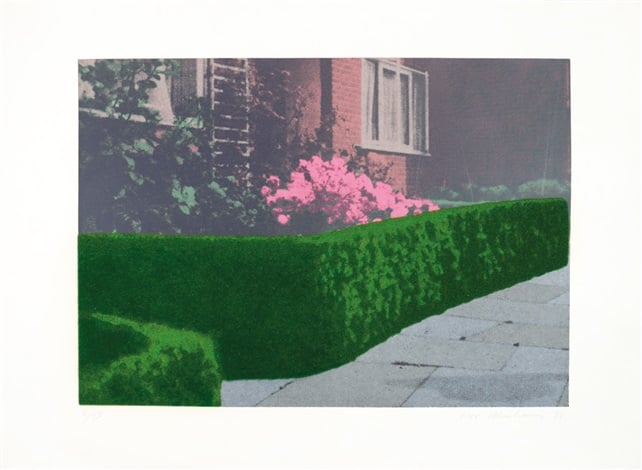
Ivor Abrahams, Privacy Plot: Cottage and Hedge (1970). Courtesy Bernard Jacobson Gallery.
Richly saturated colors define the works, with emerald greens, sky blues, and fuchsia pinks imbuing them with a sense of the unreal, similar to that of hand-colored photographs or film. There are formal ties to Surrealism as well, particularly to Giorgio de Chirico’s empty arcades and René Magritte’s vivid depictions of trees and shrubbery. Made in the 1970s, these works, both in medium and in their everyday subject matter, also nod to the aesthetics of Pop Art. “He certainly certainly respected Pop Art,” said dealer Bernard Jacobson. “Oldenburg exchanged drawings with Ivor, Lichtenstein had a large sculpture by him, and Andy Warhol was a big fan.”
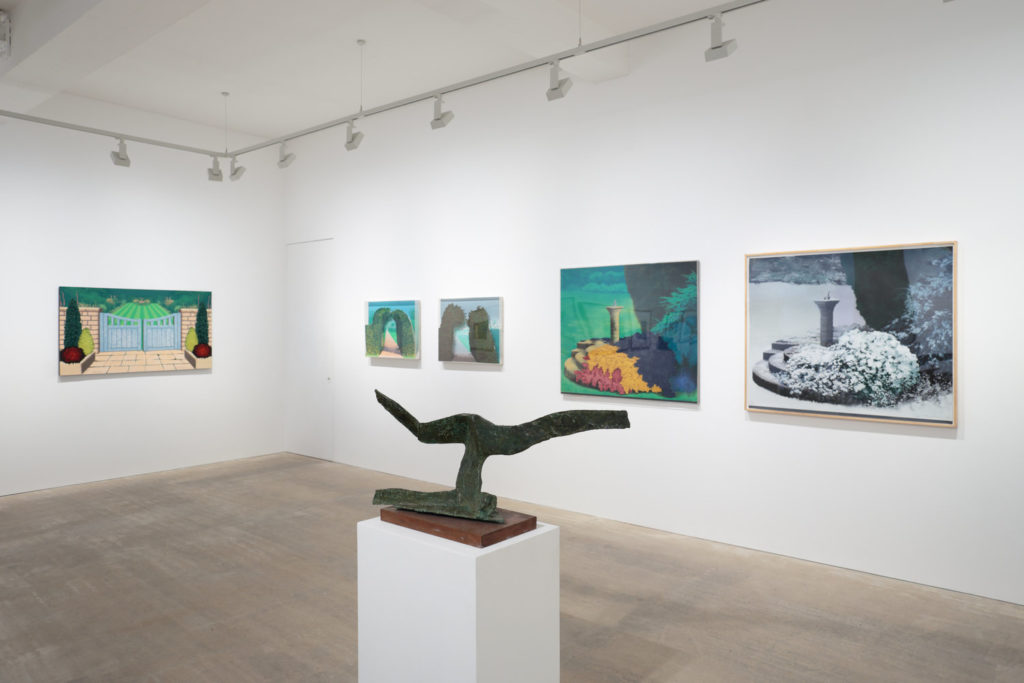
Installation view “Ivor Abrahams: the garden and other themes” at Bernard Jacobson Gallery, 2019.
In the exhibition, a selection of Abrahams’s sculptures are presented alongside the garden works. These bronzes often evoke figures in motion (dancing for instance), botanical subjects, and sometimes even the sculptures that appear in his prints and collages.
Abrahams, who passed away in 2015, had a varied output. Born in Lancashire, England, in 1935, he studied at Saint Martin’s School of Art and then the Camberwell School of Art. As a young man, he worked with mannequin maker Adel Rootstein, who introduced him to latex and plastics as sculptural materials. The Bernard Jacobson show—which marks the gallery’s 50th anniversary—has special meaning for Jacobson. “I bought my first Ivor Abrahams sculpture from the artist himself in 1959 with my own pocket money,” he said. “For our anniversary, we want to celebrate an artist I’ve been working with since the very beginning.”
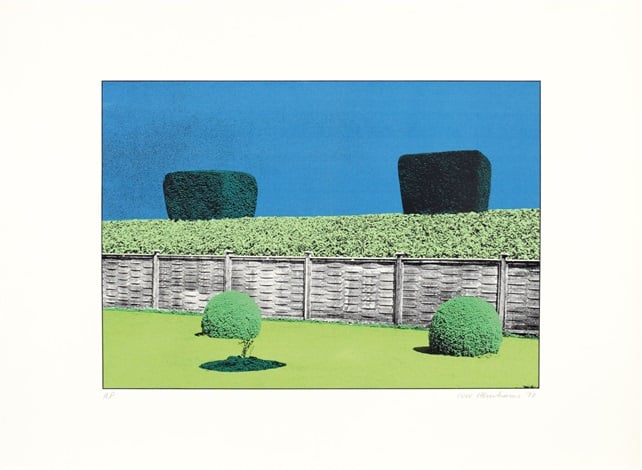
Ivor Abrahams, The Garden Suite V (Fence & hedge with two bushes), 1970. Courtesy Bernard Jacobson Gallery.
Appropriately, the show is a tribute to the artist and his decades-long relationship with the gallery. In a posthumous letter from dealer to artist included in the exhibition, Jacobson recalls: “One day in the late seventies, after a decade of endless exhibitions, you said you couldn’t do those garden images any more and you said you would have to move on.”
Which is exactly what Abrahams did, leaving, in the later years of his career, his home in Oxford Gardens for Pézenas in the South of France, where he would live most of the rest of his life. In this new location, his imagery shifted to the fountains, gods, and mythology endemic to the Mediterranean and away from the manicured suburban England that first brought him acclaim.
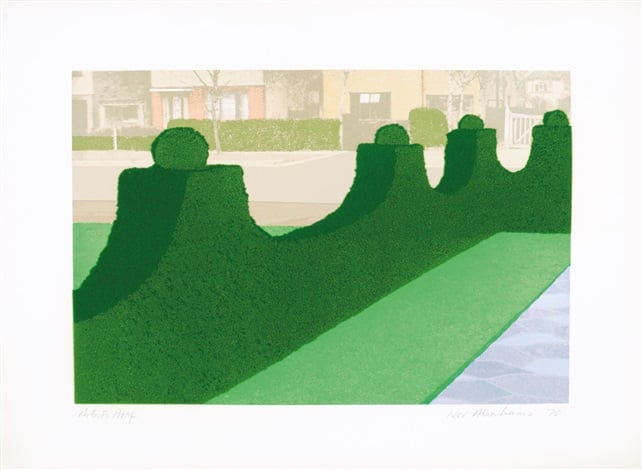
Ivor Abrahams, Privacy Plot: Hedge and Street (1970). Courtesy Bernard Jacobson Gallery.
“Ivor Abrahams | the garden and other themes,” is on view at Bernard Jacobson Gallery through April 6, 2019.
